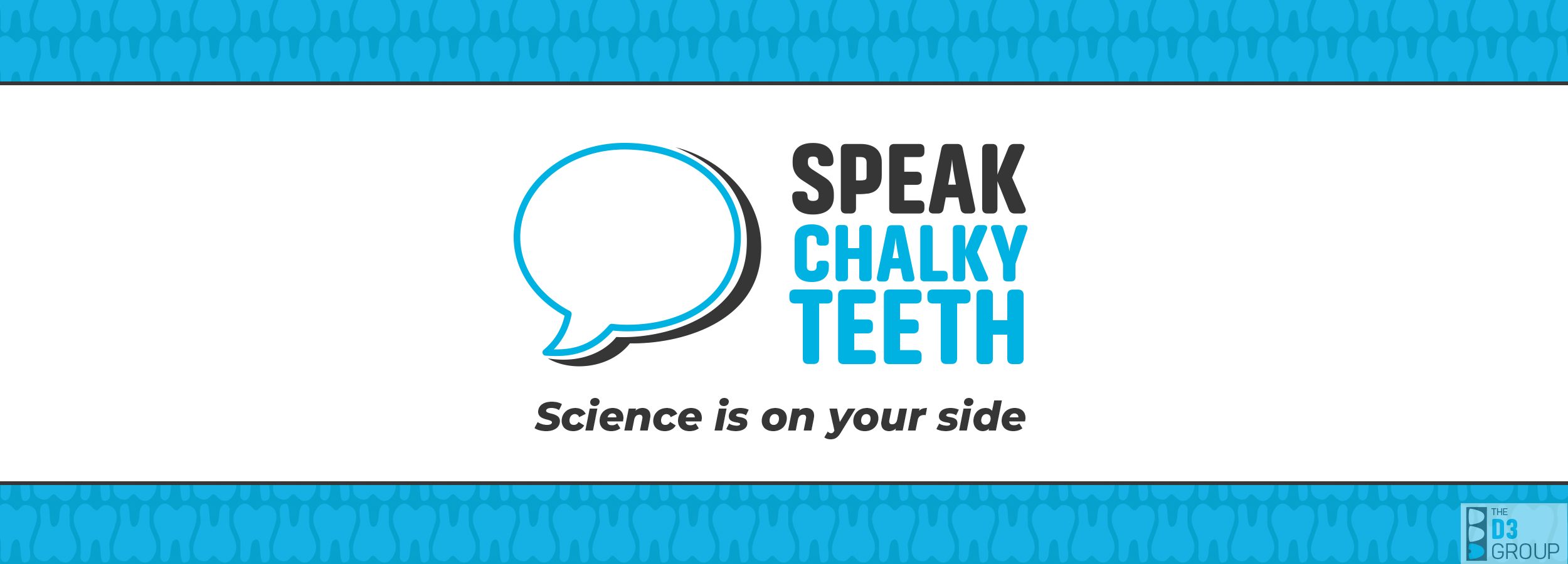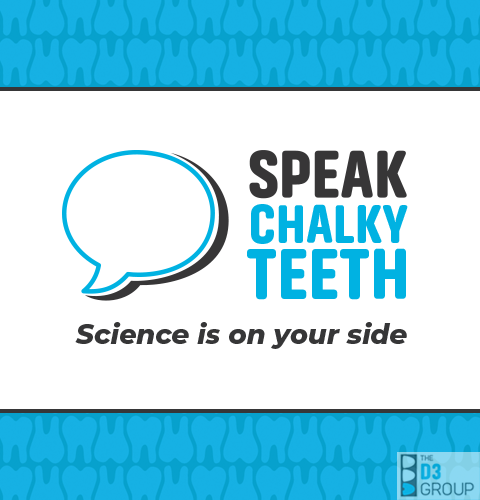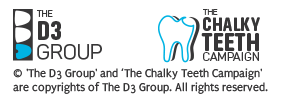'SPEAK CHALKY TEETH'
science is on your side
For sure, "chalky teeth" is just an everyday expression (colloquialism) without any specific dental or medical meaning – however we think such flexibility is great when it comes to starting healthcare conversations informed by science. To many (D3G included) 'chalky' refers to wonky-looking teeth that didn't harden properly during their development ("D3s"), or to the similar-looking discoloured-enamel spots of early tooth decay. Others might instead be talking about the 'gritty teeth' sensation sometimes felt after eating spinach or other foods rich in certain minerals (oxalates). Whichever the case, it's important to realise all these colloquial meanings have scientific foundations that connect them to more-precise terms. And it's not like this topic is new – "chalky spots" and "chalky enamel" that crumbles easily have been part of scientific research for over 100 years (read more). So, knowing that science and history are on your side, we welcome you to join us in speaking our special language, or lingo, for 'chalky teeth'.
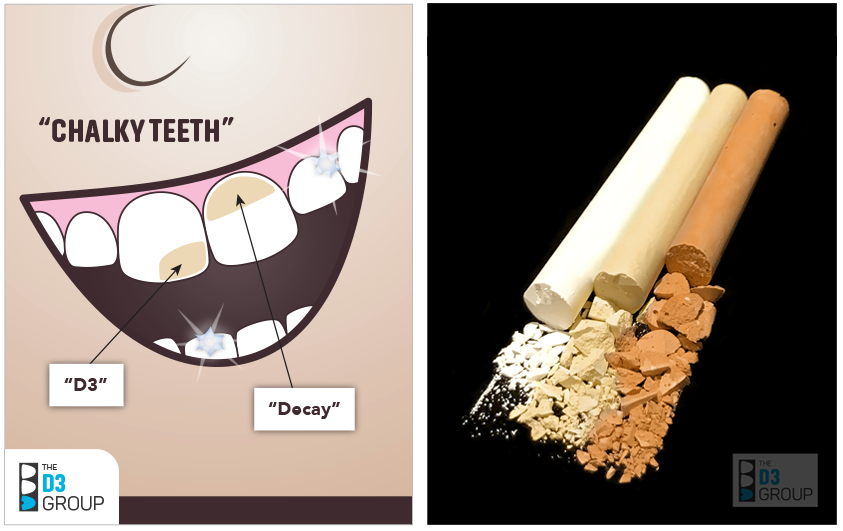
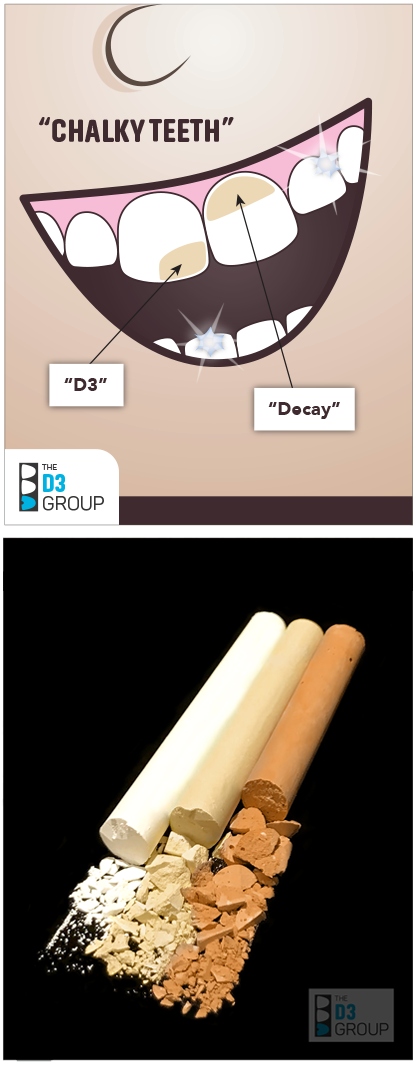
D3G's 'Chalky Teeth Lingo'
Pursuing our scientifically-driven mission for social good, D3G has developed a 'chalky teeth lingo' extending from colloquialism to specific terms that are meaningful for healthcare providers and scientists – technically this is called a translational type of terminology. So in the case of Molar Hypomin, the world's commonest D3, a conversation starting with "chalky teeth" can be guided to "chalky molars" that exhibit "chalky spots" (demarcated enamel opacities) containing "chalky enamel" (enamel hypomineralisation). Those chalky enamel spots can then be described as strong – being shiny white and hard – or weak, being discoloured (creamy yellow or brown, depending on severity; see chalk stick picture) and prone to crumbling, toothache and decay. Asking "why does this happen?" and "what do these things look like under a microscope?", talk can turn to our kid-friendly terms such as "tooth bricks", "missing bricks" and "plaque bugs" (for more info see D3G's Tooth Science for kids, and translational vernacular for adults).
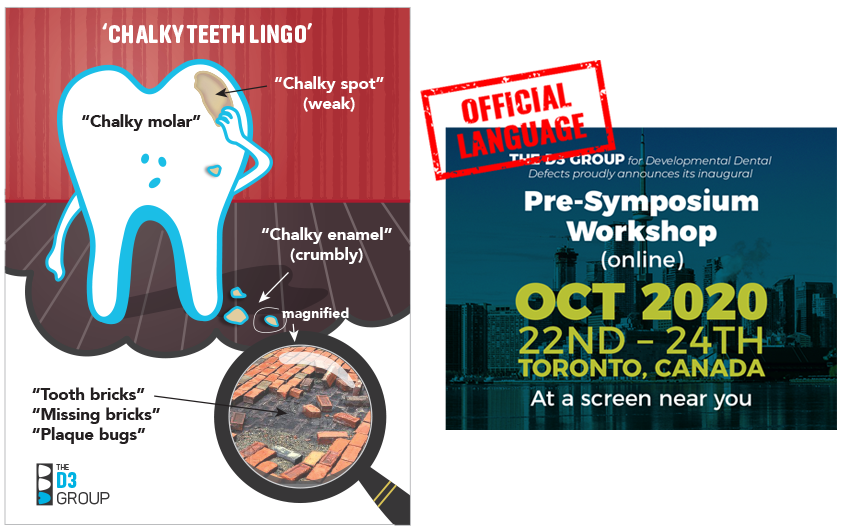
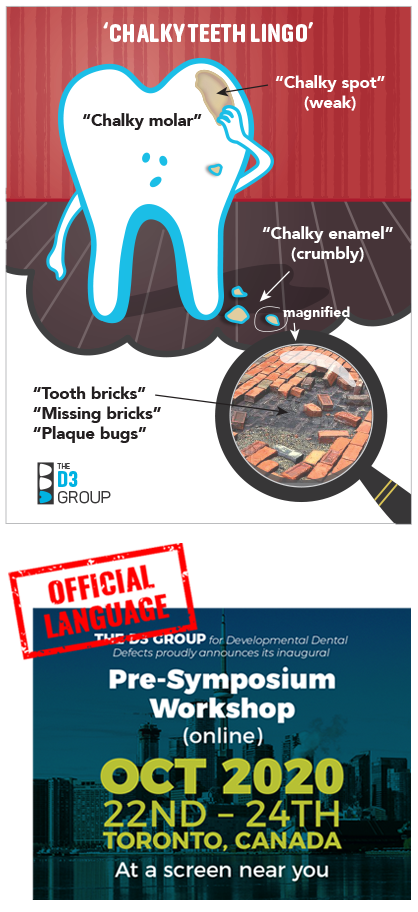
Our 'We Fight Chalky Teeth' specialists and a growing number of healthcare professionals around the world are already using this lingo on a daily basis – including in languages other than English. And to ensure a smooth two-way path between science and social good, D3G researchers have introduced 'chalky teeth lingo' into the scientific literature, international meetings, and public media (see here). As always, with helping the worldwide public being central to D3G's thinking, we welcome everyone's thoughts on how this emerging global language might be fine-tuned to benefit your particular circumstances and society (contact us).
"We Fight Chalky Teeth", "I Fight Chalky Teeth", "Champions in the fight against chalky teeth", "Support the fight against chalky teeth", "Speak Chalky Teeth", "Chalky Teeth Lingo", "Chalky Teeth Check-up" and "Chalky Teeth Check" are copyrights of The D3 Group. All rights reserved. 2024-

